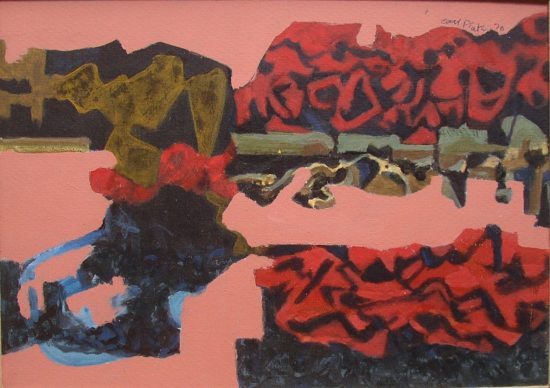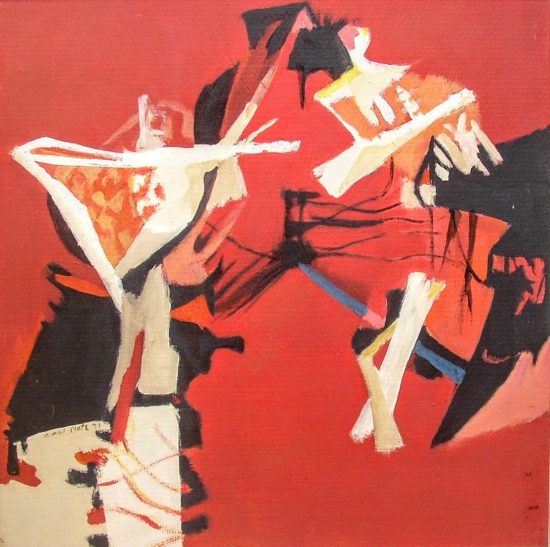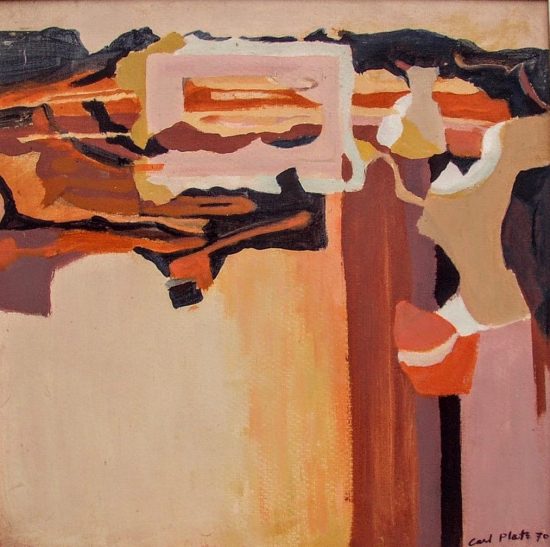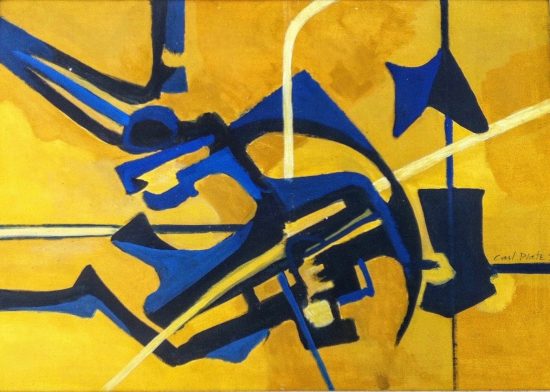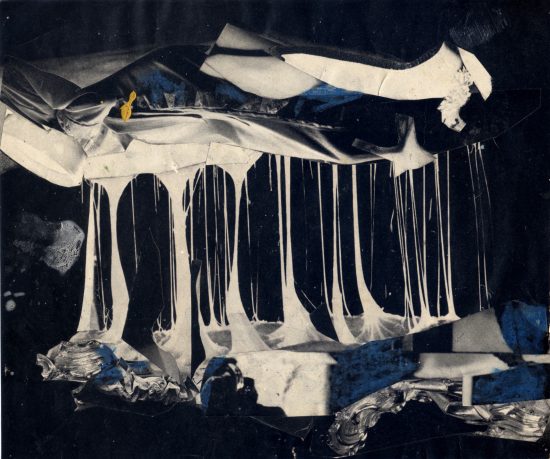Carl Plate, Untitled No 85, 1970. PVA on vinyl bonded French cotton 46.5 x 65 cm
Carl Plate, Red Square 2, 1971. PVA on canvas on hardboard,65 x 65 cm
Carl Plate, S on Y 4, 1970. PVA on vinyl bonded French cotton on foam core, 46 x 65.5
Carl Plate, Untitled study for Blue Structure 6, 1970, (5A/70). Magazine paper collage & mix media on magazine paper
19.3 x 22 cm
One of Sydney’s most influential artists of the post-war period, Carl Plate acquired an early appreciation of international contemporary art through his extensive travels. Inspired by the possibilities offered through abstract, non-representational language, collage was essential to both his creative process and his ideas for future paintings. Sourcing colour printed matter from magazines and papers that came to hand he transformed his world into colour, shape, line and form. Using the idiom of abstraction to reflect an indeterminate order, Plate imbued his work with a sense of poetic ambiguity, and a glimpse into the unknown. The collage and paintings in this exhibition were produced during a long sea voyage and residence in Paris (1970-1971). The residency was awarded as a prize for Plate’s paintings to be made into tapestries, which was awarded by the French Aubusson Tapestries and the Australian Wool Board.
Of his work in general, Carl Plate commented “I am trying to suggest another level which is a combination of what is seen and what is not seen, and finally to create something which exists by itself outside any visual experience.” In the first years of the 1970s, Plate’s life-long practice of collage, in tandem with his paintings, began to display more definite colour with details pared back, and the work devoid of figurative form. Marking a decisive shift from his earlier torn-edged and painterly abstractions, these works return to a pure form of collage, based solely on cutting and pasting with a new colourful sensibility.
Of Plate’s paintings exhibited at Bonython Gallery in November 1971, artist and critic James Gleeson wrote: “After many years when he sought to get more and more effects from fewer and fewer colours he suddenly broadened his palette to encompass the rainbow. The result is a series of paintings that are more luxurious and sumptuous than anything he has previously done”
A pioneering advocate for Modernism in post-war Sydney, Carl Plate was a constant innovator. He was an active member of the New South Wales Contemporary Art Society, and ran the Notanda Gallery in Rowe Street, Sydney – a cultural landmark for more than two decades. Plate’s work is held by both national and international public and private collections and all Australian State galleries.
Carl Plate Hard Colour: Paris Works 1970-1971 opens at Annette Larkin Fine Art on Wednesday 11 October 2017, and is on display until 11 November 2017.
